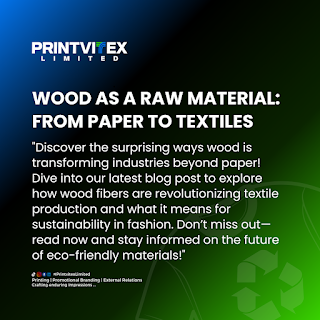Copyright Protection and Creativity:
The protection of original works through copyright is a cornerstone of the print industry's relationship with intellectual property. Copyright laws provide creators with the exclusive right to reproduce, distribute, perform, display, and adapt their works. This protection is crucial for publishers, authors, and other creators in the print industry, as it ensures that their efforts are not exploited without their permission.
For publishers, copyright protection extends to the layout and design of printed materials, as well as the written content. This means that publishers can prevent others from copying or imitating their publications, preserving the integrity of their brand and ensuring that they receive credit for their work.
Authors and content creators also benefit from copyright protection, as it allows them to control how their works are used and distributed. This protection encourages creativity and the production of high-quality content, as creators are more likely to invest time and effort into creating new works when they know that their efforts will be recognized and rewarded.
Copyright protection also plays a crucial role in the dissemination of knowledge and information. By protecting the rights of creators, copyright laws help ensure that a wide range of works are available to the public, enriching society and fostering innovation.
Trademarks and Brand Identity:
Trademarks play a crucial role in the print industry, serving as valuable assets that distinguish one brand from another in the market. Logos, brand names, and other identifiers are key elements of a brand's identity, helping to build brand loyalty and attract customers. By registering trademarks, businesses can protect these valuable assets and prevent competitors from using similar marks that could confuse consumers or dilute the brand's reputation.
One of the primary functions of trademarks in the print industry is to establish a strong brand presence. A well-recognized trademark can convey a sense of quality, reliability, and consistency to consumers, helping to build trust and loyalty over time. For example, the distinctive red and white Coca-Cola logo is instantly recognizable around the world, evoking a sense of nostalgia and reliability for consumers.
Trademark registration also provides legal protection against infringement. Once a trademark is registered, the owner has the exclusive right to use the mark in connection with the goods or services for which it is registered. This means that competitors cannot use similar marks that are likely to cause confusion among consumers, helping to protect the brand's reputation and market share.
Furthermore, trademarks can be valuable assets that can increase the overall value of a business. A strong trademark can enhance brand recognition and customer loyalty, leading to increased sales and profitability. In some cases, trademarks can even be licensed or franchised to generate additional revenue streams for the business.
Patents and Technological Innovation:
The print industry's adoption of patents to protect innovative technologies and processes has been instrumental in driving advancements and maintaining competitiveness in the market. Printing technologies have evolved significantly over the years, with digital printing and 3D printing being among the most transformative innovations.
Digital printing has revolutionized the print industry by enabling high-speed, high-quality printing with greater flexibility and customization options. This technology has opened up new possibilities for personalized marketing materials, packaging, and other printed products. Companies that have developed proprietary digital printing technologies have sought patents to protect their innovations, giving them a competitive edge in the market.
Similarly, 3D printing has had a profound impact on the print industry, allowing for the creation of three-dimensional objects layer by layer. This technology has been used in various industries, including manufacturing, healthcare, and automotive, to create prototypes, custom parts, and even organs for medical purposes. Companies that have developed unique 3D printing technologies have filed patents to protect their inventions, ensuring that they can capitalize on their innovations and maintain a competitive advantage.
By obtaining patents for innovative technologies and processes, companies in the print industry can protect their investments in research and development. Patents provide companies with exclusive rights to use, sell, or license their inventions, giving them a strong position in the market. This protection also encourages further innovation, as companies are incentivized to invest in new technologies knowing that their intellectual property will be protected.
AI Integration and Efficiency:
Artificial intelligence (AI) is increasingly being integrated into the print industry, offering new opportunities for innovation and efficiency. AI technologies, such as machine learning and computer vision, are being used to automate various processes in the print workflow, improve print quality, and enhance customer experiences.
One area where AI is making a significant impact is in the optimization of print processes. AI-powered software can analyse print jobs and make adjustments to settings such as color, resolution, and layout to optimize output quality and minimize waste. This not only improves the efficiency of the printing process but also reduces costs and environmental impact.
AI is also being used to enhance print personalisation. By analysing data on customer preferences and behaviour, AI algorithms can generate personalized print materials, such as marketing collateral or product packaging, that are more likely to resonate with individual customers. This level of personalization can help businesses improve customer engagement and drive sales.
In the area of print security, AI is being used to detect and prevent counterfeiting and fraud. AI algorithms can analyse printed materials for signs of tampering or duplication, helping businesses protect their brands and intellectual property.
Overall, AI is transforming the print industry by enabling greater automation, personalisation, and security. As AI technologies continue to advance, they are likely to play an increasingly important role in shaping the future of the print industry.
Challenges and Opportunities in the Digital Age:
The digital transformation has significantly impacted the print industry, presenting both challenges and opportunities for intellectual property (IP) protection. The rise of digital publishing and online content has revolutionized how content is created, distributed, and consumed, leading to new considerations for IP protection and enforcement.
One of the key challenges faced by the print industry in the digital age is the protection of digital works. Unlike traditional print materials, digital content can be easily copied, reproduced, and distributed without the permission of the copyright owner. This has raised questions about how to effectively protect digital works from piracy and unauthorized use.
To address these challenges, print businesses must develop new strategies for IP protection and enforcement in the digital realm. This may include implementing digital rights management (DRM) technologies to control access to digital content and prevent unauthorized copying. DRM technologies can encrypt digital content and require users to obtain a license to access or use the content, helping to protect the rights of copyright owners.
Additionally, print businesses must stay vigilant in monitoring online platforms and websites for unauthorized use of their digital works. This may involve using automated tools to scan the internet for infringing content and taking legal action against infringers.
Despite these challenges, the digital transformation has also created new opportunities for the print industry in terms of IP. Digital technologies have enabled print businesses to reach a wider audience and create new revenue streams through digital publishing and online content distribution. By leveraging these technologies, print businesses can expand their reach and increase their market share while also protecting their IP rights.
Lessons for brand owners from the print industry's relationship with IP:
- Importance of Protection: Brand owners should prioritise protecting their intellectual property, including logos, brand names, and innovative technologies, to prevent unauthorized use and maintain a competitive edge.
- Legal Compliance: Understanding and complying with intellectual property laws is crucial for brand owners to avoid legal issues and protect their rights.
- Innovation and Creativity: Leveraging intellectual property rights can encourage innovation and creativity, leading to the development of unique products and services that stand out in the market.
- Brand Development: Trademarks play a significant role in brand development by creating a distinct identity that resonates with customers and builds trust and loyalty.
- Customer Education: Educating customers about the importance of intellectual property rights can help build respect for brands and discourage counterfeiting or infringement.
Bottomline:
The print industry's relationship with IP has been a defining aspect of its evolution. As the industry continues to evolve, maintaining a strong commitment to IP protection will be essential for its continued success.
Thank you for reading and see you on the next issue!
FAQs :
Q. How can I protect my brand's logo and name?
A. To protect your logo and name, you should consider registering them as trademarks with the Nigerian Trademarks, Patents and Designs Registry. This registration gives you exclusive rights to use the logo and name in connection with your goods or services, preventing others from using them without your permission.
Q. How can I prevent plagiarism of my original works?
A. To prevent plagiarism of your original works, you should ensure that they are properly copyrighted. Copyright protection arises automatically once a work is created and fixed in a tangible form, but registering your works with the Nigerian Copyright Commission provides some form of formal structure and substance around your creation.
Q. How do trademarks help build brand loyalty and recognition?
A. Trademarks help build brand loyalty and recognition by distinguishing your products or services from those of your competitors. Customers associate your brand with certain qualities or attributes, creating a sense of trust and familiarity that can lead to repeat business.
Q. What are the benefits of registering a trademark for my brand?
A. Registering a trademark for your brand provides several benefits, including exclusive rights to use the mark in connection with your goods or services, the ability to prevent others from using similar marks, and the right to sue for damages in case of infringement.
Q. How can patents help protect innovative technologies or processes?
A. Patents can help you protect innovative technologies or processes by giving you exclusive rights to use the technology for a limited period. This protection can be crucial for maintaining a competitive edge in the market and recouping the costs of research and development.
Q. What is the difference between copyright, trademarks, and patents?
A. Copyright protects original works of authorship, such as literary, musical, and artistic works. Trademarks protect words, names, symbols, or devices used to identify and distinguish goods or services. Patents protect inventions or discoveries, granting the inventor the exclusive right to use the invention for a limited time.
Q. What should I do if I suspect infringement of my intellectual property rights?
A. If you suspect infringement of your intellectual property rights, you can take legal action against the infringing party. This may involve sending a cease-and-desist letter, filing a complaint with the Nigerian Copyright Commission or Trademarks, Patents and Designs Registry, or pursuing litigation in court. Brief a lawyer for legal guidance.
Q. How can I stop someone from using my brand's name or logo without permission?
A. If someone is using your brand's name or logo without permission, you can take legal action to stop the infringement and seek damages for any harm caused to your brand's reputation or business. This may involve filing a lawsuit for trademark infringement or passing off. Brief a lawyer for legal guidance.
Q. How can I stay updated on changes to intellectual property laws?
A. To stay updated on changes to intellectual property laws, you should regularly check the websites of relevant government agencies, such as the Nigerian Copyright Commission and the Trademarks, Patents and Designs Registry. You can also subscribe to newsletters or publications that provide updates on intellectual property law developments.
Q. What are the risks of not protecting my intellectual property?
A. Not protecting your intellectual property can lead to loss of revenue, damage to your brand's reputation, and loss of competitive advantage. Without adequate protection, competitors may copy your products or services, leading to a loss of market share and profitability.
Q. How has the print industry utilized intellectual property (IP) throughout its history?
A. The print industry has relied on IP to drive creativity, protect innovations, and build brand identity. Copyright, trademarks, and patents have been crucial in this regard, ensuring that creators and businesses are recognized and rewarded for their efforts.
Q. What role does copyright play in the print industry?
A. Copyright protection is essential for publishers, authors, and creators in the print industry, as it provides them with the exclusive right to reproduce, distribute, perform, display, and adapt their works. This protection encourages creativity and ensures that creators receive credit for their work.
Q. How do trademarks contribute to brand identity in the print industry?
A. Trademarks are valuable assets in the print industry, distinguishing one brand from another in the market. Logos, brand names, and identifiers help build brand loyalty and attract customers. Trademark registration provides legal protection against infringement, preserving the brand's reputation and market share.
Q. What impact have patents had on technological innovation in the print industry?
A. Patents have been instrumental in driving advancements in the print industry, particularly in technologies like digital printing and 3D printing. Companies that have developed innovative technologies have sought patents to protect their inventions, giving them a competitive edge and encouraging further research and development.
Q. How is artificial intelligence (AI) being integrated into the print industry?
A. AI is being used to automate processes, improve print quality, and enhance customer experiences in the print industry. AI-powered software analyses print jobs, adjusts settings for optimization, and enhances print personalisation based on customer data. AI also plays a role in print security, detecting and preventing counterfeiting and fraud.
Q. What challenges and opportunities does the digital age present for IP protection in the print industry?
A. The digital age has brought challenges such as protecting digital works from piracy and unauthorized use. Print businesses must develop new strategies for IP protection, including implementing DRM technologies and monitoring online platforms for infringing content. Despite these challenges, digital technologies have created new opportunities for reaching a wider audience and creating new revenue streams through digital publishing and online content distribution.











